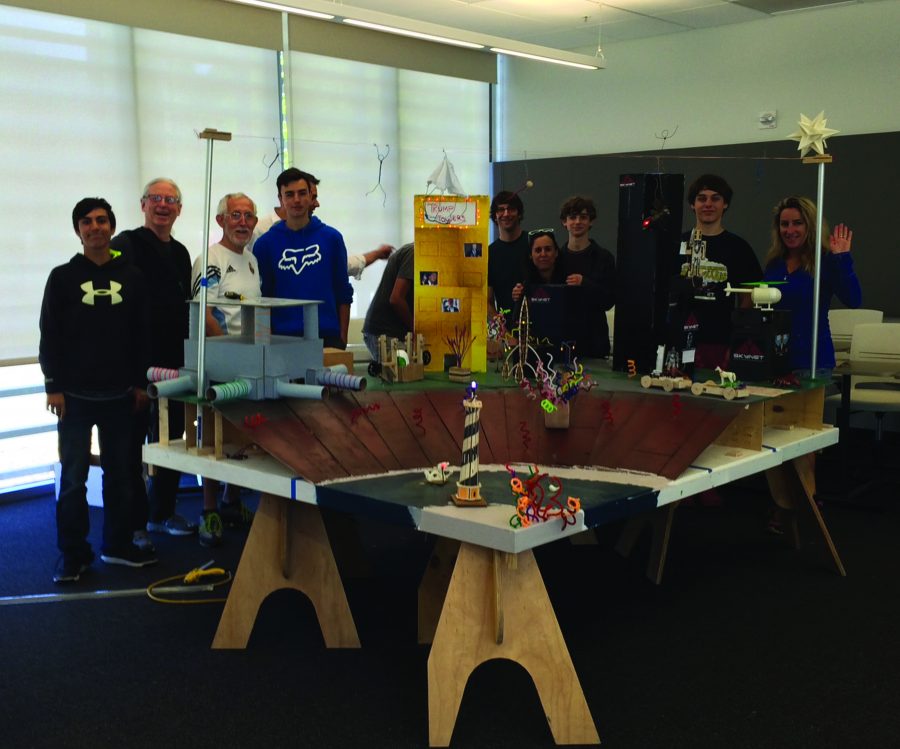Students in Geo Monley’s Computer Applications class, known as the “Maker” class, created a miniature animatronic city and presented it at the Marinnovators Faire, a youth maker faire sponsored by the Marin County Office of Education, on April 30. The students named their model city Makersfield and began the project at the beginning of the semester. Makersfield was dismantled on May 2.
The final product included interactive electronic and mechanical features and was built using plywood scaffolding on a rectangular wooden board. City structures included a model lighthouse, Trump Tower, and power plant.
The project was primarily student run. “I was just there to help people get their things going,” Monley said. Freshmen Jace Monti and Brycen Falzone and junior Sammy Whiteley coordinated and oversaw the construction of the city, while other students in the class created individual structures and buildings.
Whiteley and Falzone were in charge of city planning. Falzone also focused on building the raised platform and mapping out the locations of the roads, while Whiteley did most of the painting for the project.
“[I did] the original city design. [It] was modelled off of Paris…[but] it was later scrapped for a more visually appealing…manner. The final city vaguely resembled San Francisco,” Whiteley said. That resemblance included the model bay in one corner of the city, which was constructed by raising the structure of the city and sloping the plywood down to create the appearance of a beach and a bay.
Falzone described the construction process. “We built the raised platform by sketching how all the scaffolding was going to go and we cut out all the scaffolding,” he said. “Then we built the ramp by placing all the wood on top of each other.”
Monti acted as Makersfield chief electrician. “I started out just doing street lights and then moved my way into some city planning and ended up doing all the wiring for the board,” he said. “Before the project, I knew basic circuitry, but I had never done anything this complex so I kind of learned as I went.” He also enjoyed the freedom and creativity of the project. “[There were] no limitations to what we could do…that’s what [was] fun.”
According to Monley, the project taught students a lot of useful skills. “Troubleshooting, solving problems… and working with your hands, those are transferrable skills,” he said.


